Virginia bluebells (Mertensia virginica) are a North American wildflower whose ephemeral blue beauty lights up forest floors in mid-spring. These bluebells are not the bell-adorned spires of English idylls. This is an important distinction for two reasons: Virginia bluebells are edible, whereas English (and Spanish) bluebells—species of Hyacinthoides—are toxic; and then there is simply their native status. Virginia bluebells are woodland denizens ideally suited to tre-filled gardens or to container gardens with afternoon shade. Their clear, breathtakingly blue presence is a tonic for the winter-weary, and their flavorful leaves are a treat for tired palates.
Here’s how (and where) to grow Virginia bluebells, and how to eat them. A little goes a long way.
Photography by Marie Viljoen.

First, let’s talk flavor: Virginia bluebells have a fascinating culinary secret. Their soft, gentle-looking leaves pack a punch. And it is a surprise. A few seconds after you begin to chew a tender leaf, the surprise arrives: oysters. It’s uncanny. Sometimes it can be hard to identify—and harder to describe—the flavor of an unfamiliar ingredient, but when I first nibbled a raw leaf, there was no hesitation, despite the apparent weirdness. Absolute oyster, raw and briny. But in a leaf. It makes lettuce look very boring.
One of Mertensia virginica‘s relatives is M. maritima (and its subspecies). A high water-mark dweller on wind-swept, pebbled beaches, it grows natively in regions as geographically diverse as Northern Europe, Alaska, and New England; it is threatened and endangered in some regions. But one of its common names is…wait for it…oyster leaf. It is listed in Daniel Moerman’s fascinating ethnography Native American Food Plants: “Long, leafy stems boiled, cooked briefly, and eaten with seal oil.”
I don’t have seal oil, but I do have some ideas.
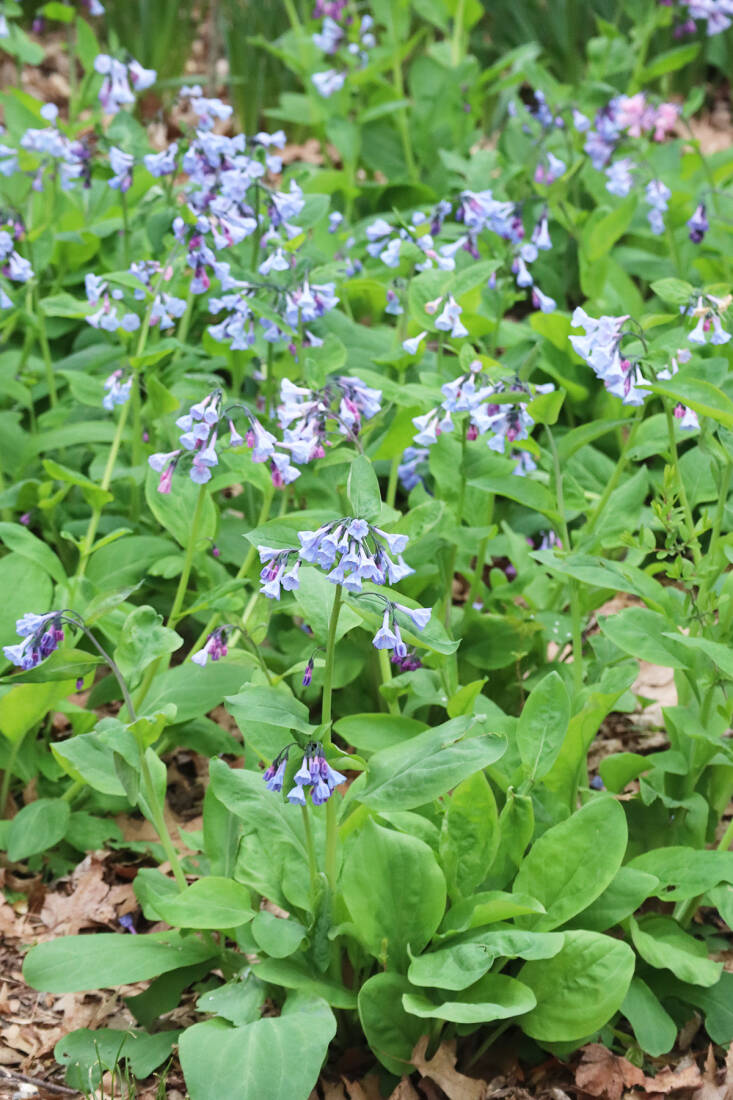
Despite their botanical and common names, wild Virginia bluebells are not confined to that state. They have a broad Eastern range in North America, from Ontario through Alabama, and west to the Plains. They are hardy from USDA zones 3 to 8, making them very cold-tolerant, and even more appealing (I think) in terms of culinary application. They beat rhubarb to the table by a month.
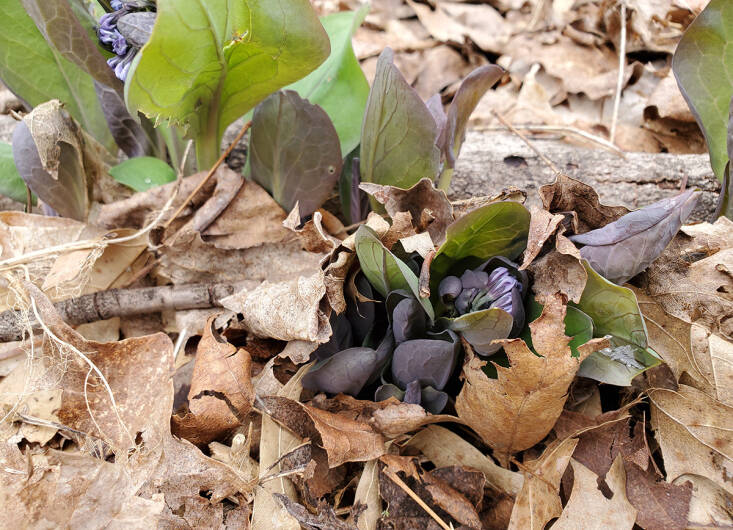
In terms of soil, like any other forest dweller used to emerging from fallen deciduous leaves, Virginia bluebells appreciate humus or compost, and deep watering in times of drought. Otherwise, they are very low-maintenance. Emerging in early spring, they bloom for about two to three weeks in mid-spring, become taller and lankier as they mature, and by summer, slowly, discreetly, they have disappeared.
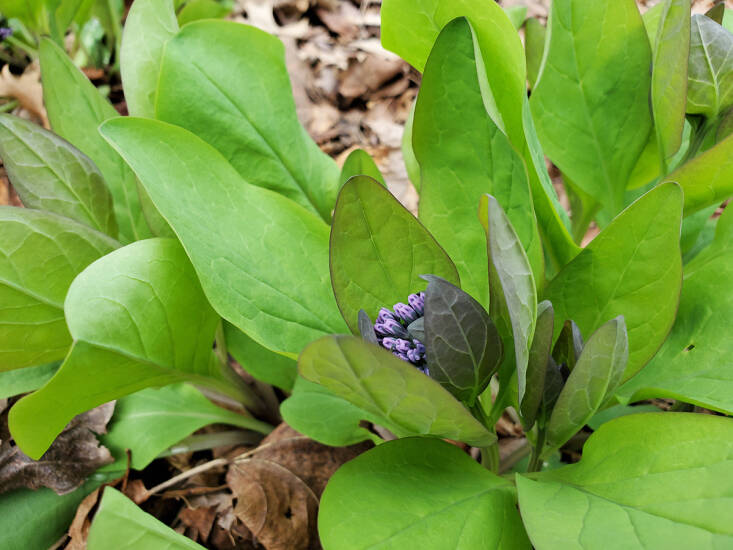
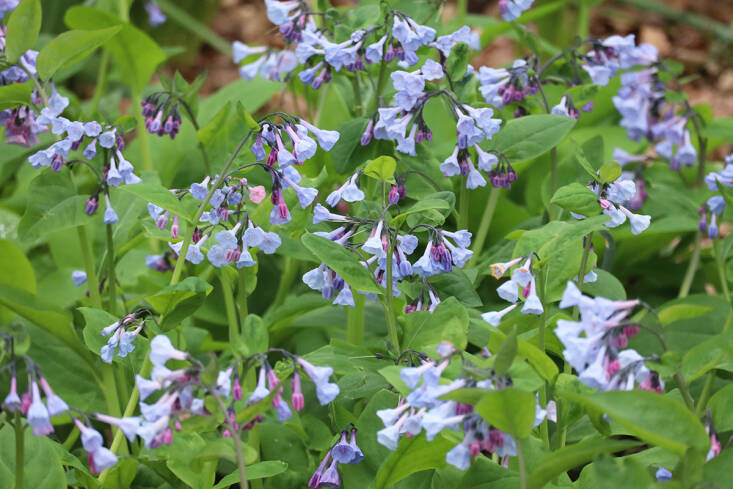
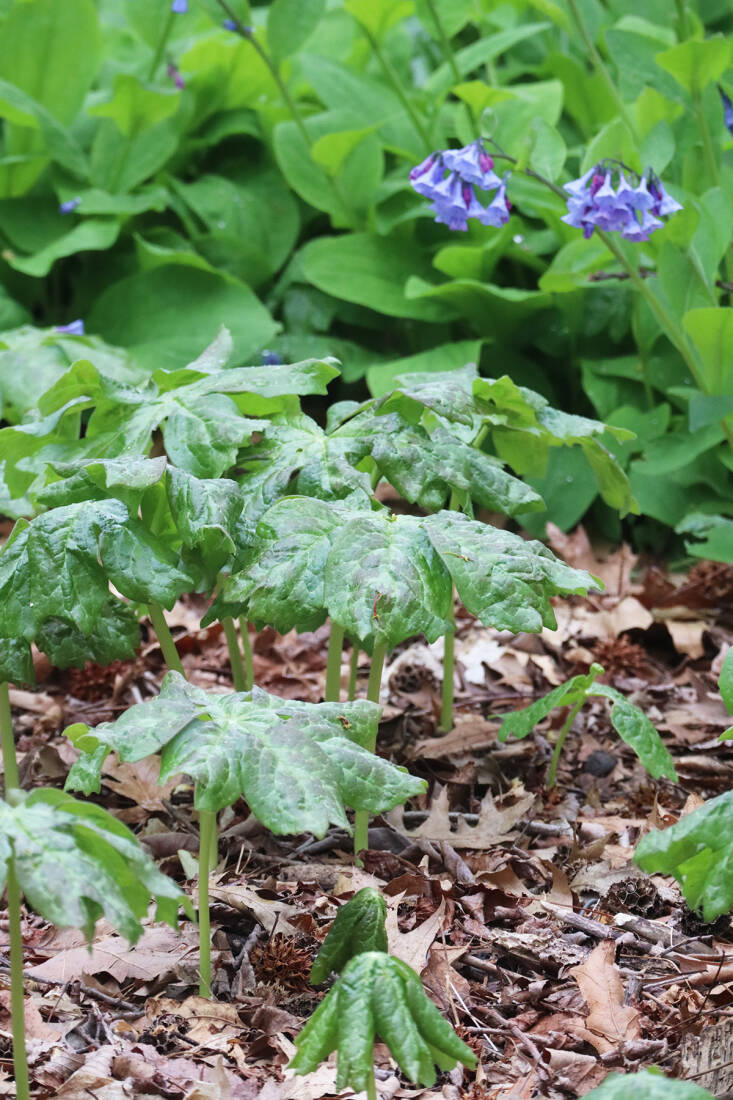
This is a plant to grow for three reasons: 1. It’s wildly ornamental. 2. It supports biodiversity and native pollinators: Butterflies and moths pollinate the tubular flowers (you need a long tongue). 3. Finally, it’s edible. The narrow-viewed idea that you need full sun to grow vegetables is simply that. Forest farming in cold climates means incorporating woodland plants into your enlightened kitchen garden plan. Virginia bluebells are good companions for cultivated ramps (Allium tricoccum and subspecies), May apples (Podophyllum peltatum), and ostrich ferns (Matteuccia struthiopteris, the source of edible-when-cooked fiddleheads). And then there is that flavor.


So what are the best ways to eat Virginia bluebells? While the flowers are obviously beautiful, as well as edible, I focus on the leaves, using them sparingly as a herb or a wrapper. They are a vegetable in their own right, but you’d need to harvest more to use them as such (Forager-Chef, Alan Bergo, likes them as a stem vegetable). They have a very strong personality, and I like to pair their savory flavor with either very gentle partners (eggs, noodles, rice) or ones whose own character is assertive (mushrooms, duck, soy, sesame).






Virginia Bluebell Omelette
Serves 1 (or two tiny eaters)
Do we need another omelette recipe? Always! This one features no cheese. Adding chive flowers to the batter gives the omelette a foundation for the light briny flavor of the leaves. You can substitute any Allium flowers (or a tablespoon of chive leaves, or a ramp leaf). My most reliable omelette pan is a stainless steel All Clad that has been working hard for over a decade.
- 4 Virginia bluebell leaves
- 1 Tablespoon butter
- 3 large eggs
- 1/4 cup whipping cream
- Large pinch salt
- 4 chive flowers, pulled apart
- Black pepper
Stack the Virginia bluebell leaves on one another, roll up into a tube shape and slice thinly. Reserve.
In a small bowl beat the eggs with the cream and salt until blended. Add half the chive flowers.
In a small saucepan (mine is 8 inches) melt the butter over medium heat. Swirl it around to coat the sides of the pan. Just as it begins to brown, pour in the egg mixture. As the sides of the eggs cook and turn pale, loosen the edges with a butter knife or spatula, tilting the pan as you do so to let the raw eggs run from the center of the pan to the sides. Repeat until the eggs are just set (no more will run to the edges) but still wet on top. Add the 3/4’s of the Virginia bluebell leaves. Tilt the pan sharply, and use your other hand to slide the spatula or knife under one side of the omelette to fold it downwards (let gravity help you) over the other. As it folds, slide the omelette right out of the pan and onto a waiting plate. Garnish with reserved chive flowers, leaves, and freshly cracked black pepper. Eat at once.
See also:
- Elm Samaras: The Tree’s Winged Seeds Are Edible and Easy to Collect Right Now
- Airy, Ethereal Cherry Blossoms: Catch Them While You Can
- Just Dandy: Served Wilted or Fresh, Dandelions for the Win
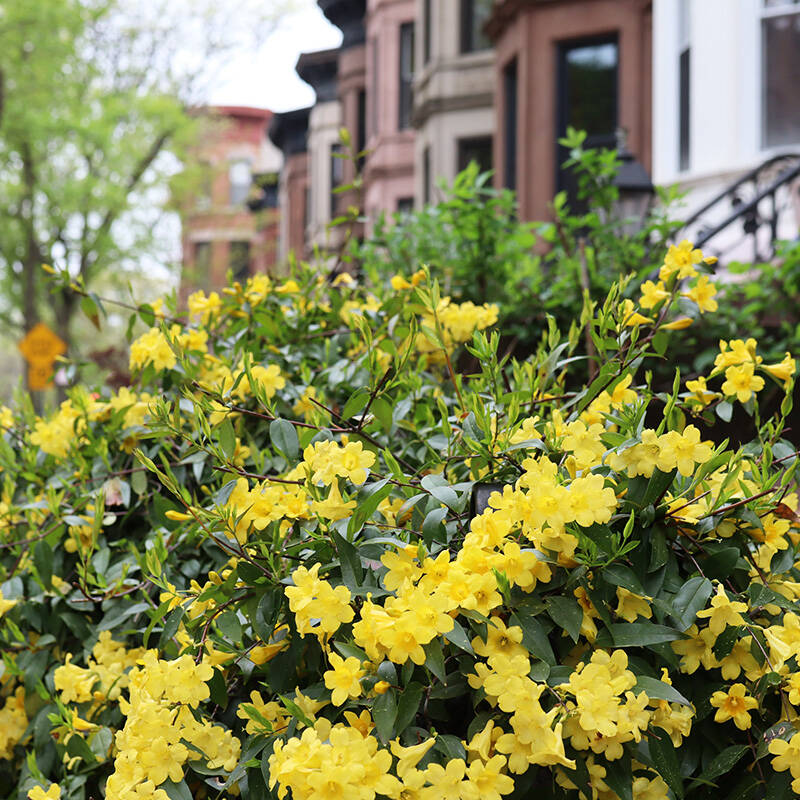

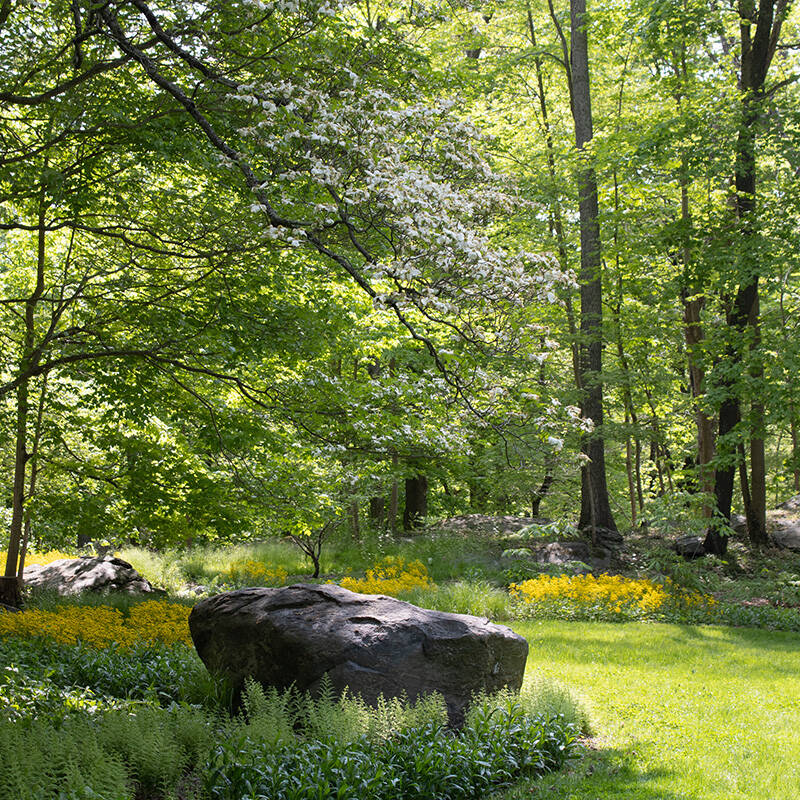




Have a Question or Comment About This Post?
Join the conversation